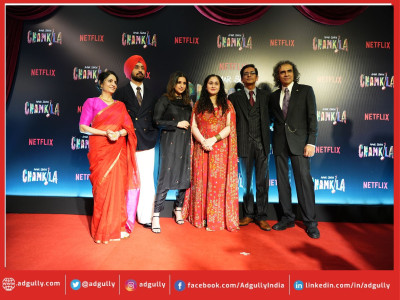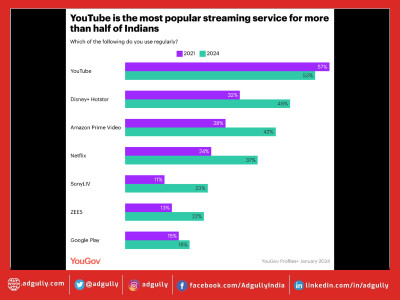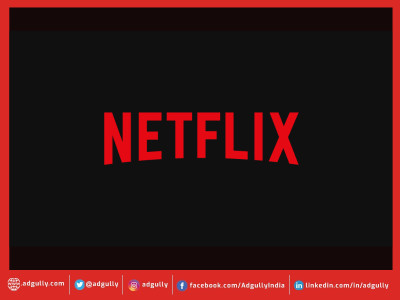The password sharing plague on OTT platforms
Authored by Arul Anand S P, Director Of Engineering at ViewLift
Every year, when the IPL juggernaut rolls into the collective mindscape of cricket lovers worldwide, pubs, restaurants and households circle around matchday schedules. It’s a great time for advertisers and OTT platforms that manage to secure the streaming rights for these matches. Moneys pump in for all stakeholders. Take this as a sample – Viacom18’s digital streaming platform, Voot, bagged the digital streaming rights for the next five years of this mammoth sporting spectacle at a whopping ₹20,500 crore (~USD 2.6 million).
Mind-boggling as this number is, it begs an important question. Will the company manage to break even for just this one event? With the trend of password sharing becoming the growing beast on the block for OTTs worldwide, will Viacom18 recover its investment in the coming IPL seasons?
While I cannot predict what will happen with IPL, I can talk about the burgeoning password-sharing problem and what it means for both OTT platforms and consumers.
Have you shared your Netflix password recently? Understanding the password-sharing jeopardy
With changing norms of family movie nights and a wide variety of video streaming portals to choose from, a household may collectively have subscriptions for more than one platform. They share their respective passwords to make it an economical viewing experience for the entire family. While this may be a viable entertainment expenditure for the family, it does not translate to increased revenues for the service provider.
What began as a market penetration and brand recognition exercise in burgeoning streaming markets across the world, password sharing is now baring its fangs at all streaming platforms today. It worked wonders in establishing the presence of many OTT brands. It turned a ‘luxury’ into a regular consumption habit in consumers of all ages and economic strata the world over. However, the brand presence has not translated into new or renewed subscriptions from what these companies hoped would be a growing user base.
The first to take cognizance of this stagnation in business growth due to password sharing was perhaps the OTT behemoth, Netflix. For the first time in a decade, Netflix has been steadily losing subscribers – a staggering 200,000 in Q1 this year and a projected two million in Q2. So, their initial strategy of converting ‘taste users’ into paying subscribers through password sharing seems to be failing.
However, it is not just Netflix that is losing customers or is unable to grow its subscriber base due to password sharing. It is estimated that in the US alone, video streaming services are looking at losses upwards of $2.3 billion in 2022. Netflix is staring into the abyss of a subscription fee loss of nearly $791 million. In India, paying OTT users are probably less than 10%.
These numbers are staggering, and the issue is more deeply entrenched in consumer behavior than it appears on the surface.
So why do people share their OTT passwords?
There is a vast pantheon of video streaming platforms and absolutely no shortage of unique content. When it started, every viewer wanted a piece of the viewing pie. But as time went by, subscription fatigue started to set in. Many users could simply not be bothered about renewing their plans.
The truth is that not too many subscribers can afford to maintain the cost of multiple subscriptions. An estimated 57% of US households subscribe to four or more streaming services. Not only does this affect the household wallet, it gradually leads to consumers discontinuing subscriptions over time to stay within their budgets. But costs aside, viewers are hooked to their favorite shows spread across a variety of platforms. A few useful subscription bundles exist, but the industry is by and large running on password sharing. Viewers are scrabbling back to the thesaurus to stretch the definition of family or household. Friends are becoming extended families. And everyone’s OTT password is everywhere!
Dealing with this unique business conundrum
While subscription plans may allow for one or two devices to view simultaneously, there is no way for the service provider to identify unique users based on IP address or the number of simultaneous logins into an account.
For now, all that OTT platforms can do to manage this situation is to restructure their device registration plans and strictly monitor the number of simultaneous logins using device IDs. But this is hardly a foolproof solution because the same viewer could be using different devices to watch the same content.
Netflix is looking at monetizing account sharing for each unregistered viewer to an account, but that too is a short to mid-term solution.
Another possible solution could be to restrict the number of accounts based on family size. But it is cumbersome, if not impossible, to define the average family size for every culture and geography.
These interim measures are slowly gaining traction in addressing the challenge of password sharing. But OTT brands continue to explore ways in which they can tackle password sharing without frustrating their paying users. This is a delicate balance and one that OTT brands and their technology partners are yet to achieve.
But are consumers aware of the privacy risks of password sharing?
We never share our banking or phone passwords. These passwords are associated with privacy and fiscal security. But most consumers don’t recognize that they use similar if not the same passwords across their OTT and banking and other services. Freely sharing OTT passwords exposes users to credential stuffing. Hackers on the dark web scrape for password matches across the internet and can gain access to one service if they have the password you use for another.
There is also a growing market for hacked passwords from video streaming portals sold to new users. As a result, your OTT subscription password can land in unknown corners of the internet, in the hands of people you don’t know and will probably never meet.
OTT brands must build more robust consumer awareness around these data security and privacy risks associated with password sharing. Awareness could go a long way in curbing the menace because clearly, the password sharing trend can hurt consumers just as much as it hurts OTT brands.
With evolving technologies, we may soon have a solution to this password-sharing web in which OTT brands and consumers are entangled. But in the end, consumer behaviour also needs some introspection. Why rush to misuse services if you can ethically watch your favourite shows that have taken years’ worth of hard work?
DISCLAIMER: The views expressed are solely of the author and Adgully.com does not necessarily subscribe to it.
















Share
Facebook
YouTube
Tweet
Twitter
LinkedIn